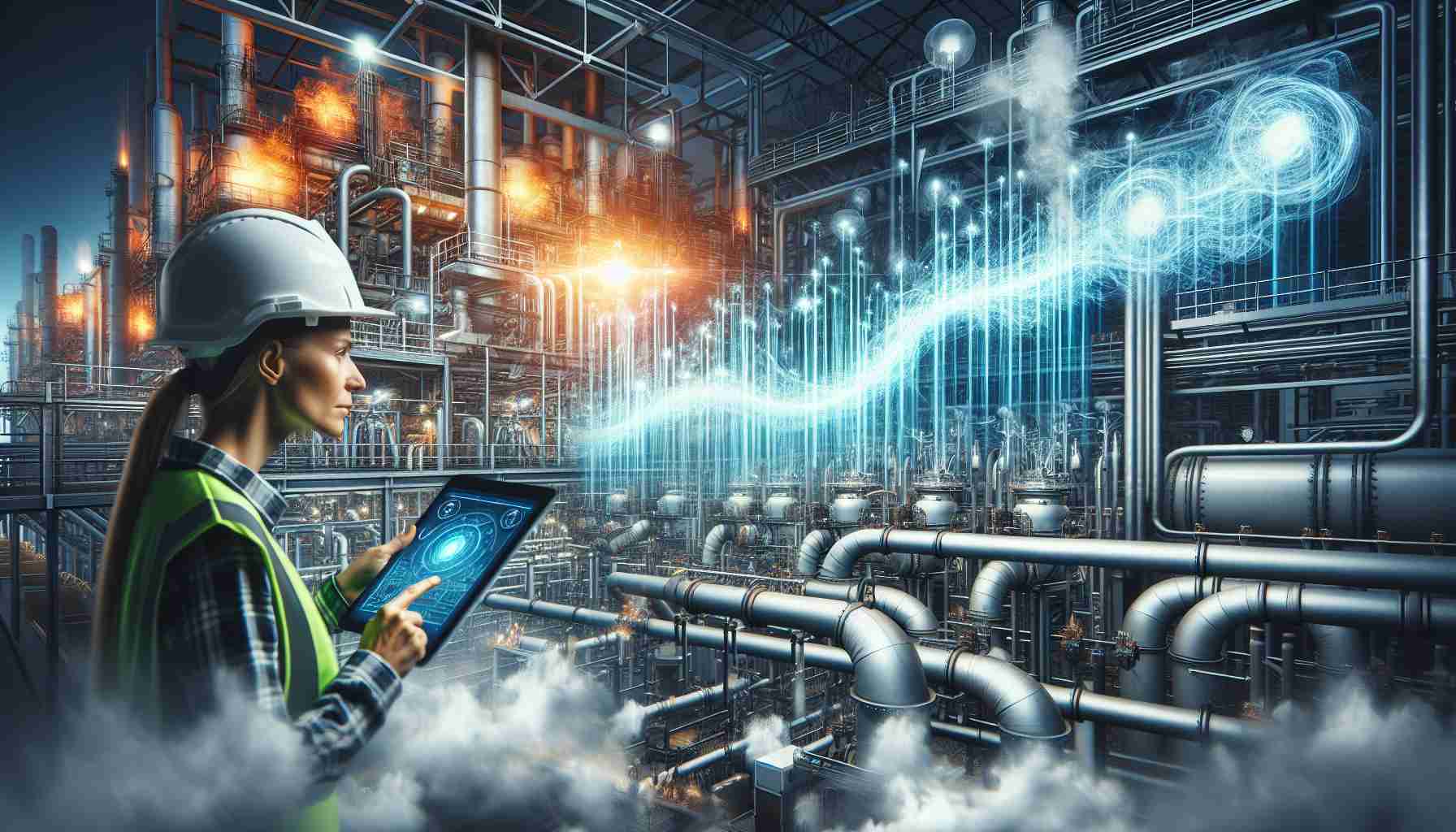
The Emerging Role of Waste Heat Recovery
As the world grapples with increasing carbon emissions, waste heat recovery technology is becoming a vital player in the quest for energy efficiency. This innovative approach aims to capture heat wasted during industrial activities, energy production, or transportation, turning an overlooked byproduct into a valuable resource.
At its essence, waste heat recovery focuses on reusing thermal energy that would typically escape into the atmosphere. For instance, conventional power plants only convert about 40% of energy from fuel into electricity, with the bulk lost as heat. Heat capture technologies, like thermoelectric generators, are designed to reclaim this energy, converting it into electricity, heating buildings, or supporting further industrial processes.
Advancing Global Sustainability Efforts
The implications of this technology stretch far and wide, with significant contributions to achieving net-zero emission targets. The International Energy Agency estimates that recovering industrial waste heat could potentially reduce global industrial energy demand by up to 20%. This equates to avoiding millions of tons of CO2 emissions each year.
However, the journey to widespread adoption faces hurdles. Many industries are unaware of the benefits, and the initial investment can be daunting. Despite these challenges, recent advances in heat recovery systems are making them more accessible and cost-effective.
Transforming Industries for a Greener Future
From data centers to the transportation sector, the applications for waste heat recovery are vast. The transportation industry, for example, could leverage heat from vehicle exhaust to enhance fuel efficiency. Additionally, capturing waste heat can support the production of clean hydrogen, a key component in the future of sustainable energy.
As industries seek to lower emissions and increase efficiency, the potential of waste heat recovery presents a compelling opportunity. With the right focus and investment, this technology could redefine energy practices worldwide, aligning with ambitious climate goals while fostering a sustainable future.
Unlocking Energy Efficiency: How Waste Heat Recovery is Revolutionizing Sustainability
The Emerging Role of Waste Heat Recovery
As global carbon emissions continue to rise, waste heat recovery (WHR) technology is gaining prominence as a crucial asset in promoting energy efficiency. This innovative method captures thermal energy lost during industrial processes, energy generation, and transportation, transforming what was once viewed as waste into a valuable resource.
Waste heat recovery primarily focuses on repurposing thermal energy that typically dissipates into the environment. For example, conventional power generation facilities convert roughly 40% of the fuel’s energy into usable electricity, with a significant portion wasted as heat. Technologies such as thermoelectric generators have emerged to reclaim this energy, channeling it into electricity production, building heating, or further industrial applications.
Advancing Global Sustainability Efforts
The ramifications of WHR technology are extensive, contributing substantially to global net-zero emission goals. According to the International Energy Agency (IEA), the recovery of industrial waste heat has the potential to reduce global industrial energy consumption by up to 20%, which translates into billions of avoided tons of CO2 emissions annually.
Despite its undeniable benefits, the path to widespread adoption is fraught with challenges. Many industries remain unaware of WHR’s advantages, and the high initial investment can deter implementation. However, recent developments in heat recovery systems have made these technologies increasingly viable and cost-efficient.
Transforming Industries for a Greener Future
Waste heat recovery technologies are versatile and can be applied across various sectors. In transportation, for instance, capturing heat from vehicle exhaust can significantly improve fuel efficiency. Furthermore, recovered waste heat can aid in hydrogen production, a key element for a sustainable energy landscape.
Features and Innovations
– Technological Enhancements: The introduction of advanced materials and improved thermoelectric materials has enhanced the efficiency of heat recovery systems.
– Modular Designs: Many new WHR systems come with modular designs, allowing for easier integration into existing infrastructures without significant overhauls.
– Smart Monitoring: With IoT technology, WHR systems can now include smart monitoring features that optimize heat capture in real-time, maximizing efficiency.
Pros and Cons
Pros:
– Reduces greenhouse gas emissions substantially.
– Improves energy efficiency in operations.
– Presents opportunities for cost savings in energy bills.
Cons:
– High initial capital investment may deter some businesses.
– Requirement for specialized knowledge and expertise during installation and maintenance.
– Potential regulatory hurdles in certain regions.
Use Cases
– Data Centers: By reclaiming excess heat, data centers can significantly cut down on cooling costs and improve overall efficiency.
– Manufacturing Plants: Industries with high thermal output can repurpose waste heat for additional energy needs, reducing reliance on fossil fuels.
– Transportation: Vehicles equipped with WHR technologies can demonstrate improved fuel efficiency and lower emissions.
Limitations
While the potential for waste heat recovery is substantial, there are limitations to consider:
– Specificity of Application: WHR technologies often require tailored solutions based on the unique heat sources and operational conditions of each industry.
– Economic Viability: Although costs are decreasing, not all facilities will find WHR economically attractive without incentives or regulatory support.
Market Insights and Trends
The global market for waste heat recovery is expected to witness robust growth in the coming years. Driven by increasing energy costs and stringent environmental regulations, investments in WHR technology are likely to surge. The adoption rate is projected to rise not only in traditional sectorsbut also in emerging markets, positioning waste heat recovery as a critical component in the transition toward sustainable energy practices.
Conclusion
With the correct investment and focus, waste heat recovery technology has the potential to transform energy practices on a global scale, aligning with ambitious climate objectives and fostering a more sustainable future. Industries that embrace this innovative approach stand to benefit not only from cost savings but also from a significant reduction in their carbon footprint.
For more on energy efficiency and sustainability innovations, visit energy.gov.



